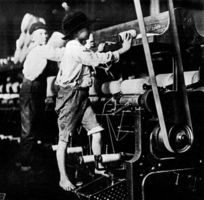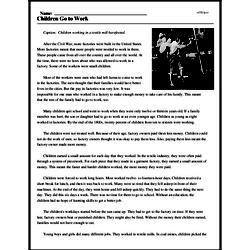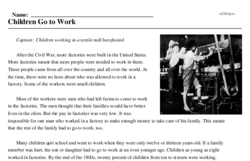Children Go to Work
Caption: Children working in a textile mill barefooted.
After the Civil War, more factories were built in the United States. More factories meant that more people were needed to work in them. These people came from all over the country and all over the world. At the time, there were no laws about who was allowed to work in a factory. Some of the workers were small children.
Most of the workers were men who had left farms to come to work in the factories. The men thought that their families would have better lives in the cities. But the pay in factories was very low. It was impossible for one man who worked in a factory to make enough money to take care of his family. This meant that the rest of the family had to go to work, too.
Many children quit school and went to work when they were only twelve or thirteen years old. If a family member was hurt, the son or daughter had to go to work at an even younger age. Children as young as eight worked in factories. By the end of the 1800s, twenty percent of children from ten to sixteen were working.
The children were not treated well. Because of their age, factory owners paid them less money. Children could not do the work of men, so factory owners thought it was okay to pay them less. Also, paying them less meant the factory owner made more money.




